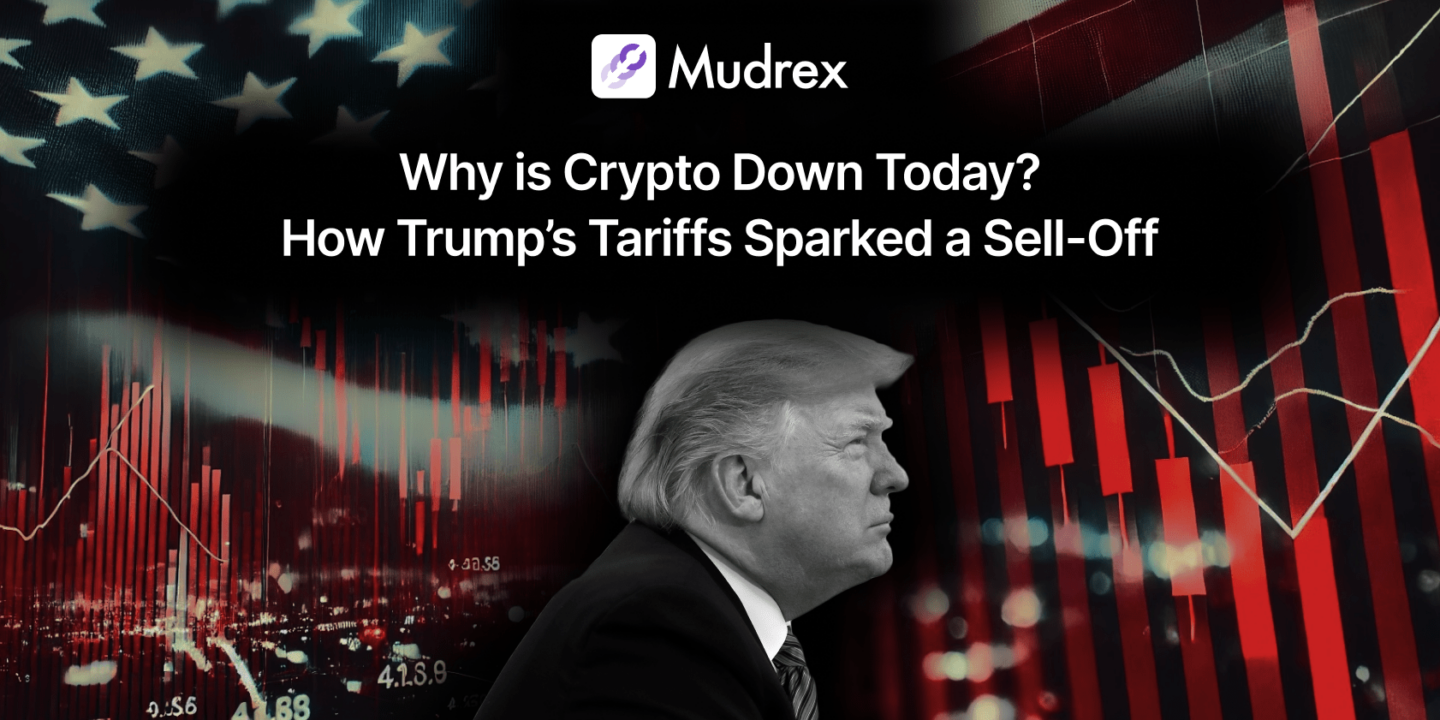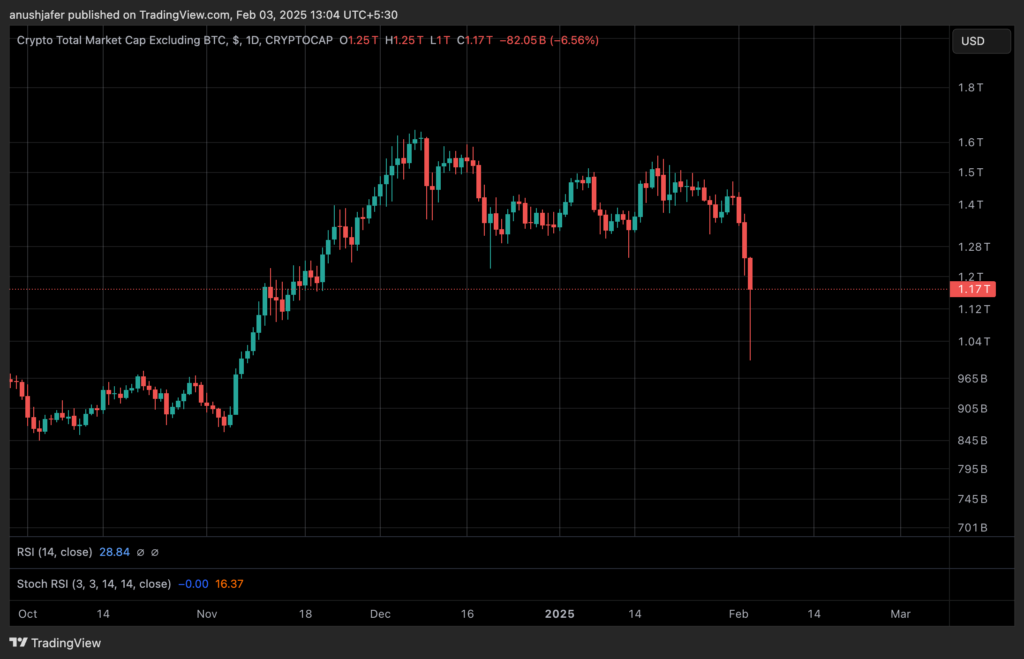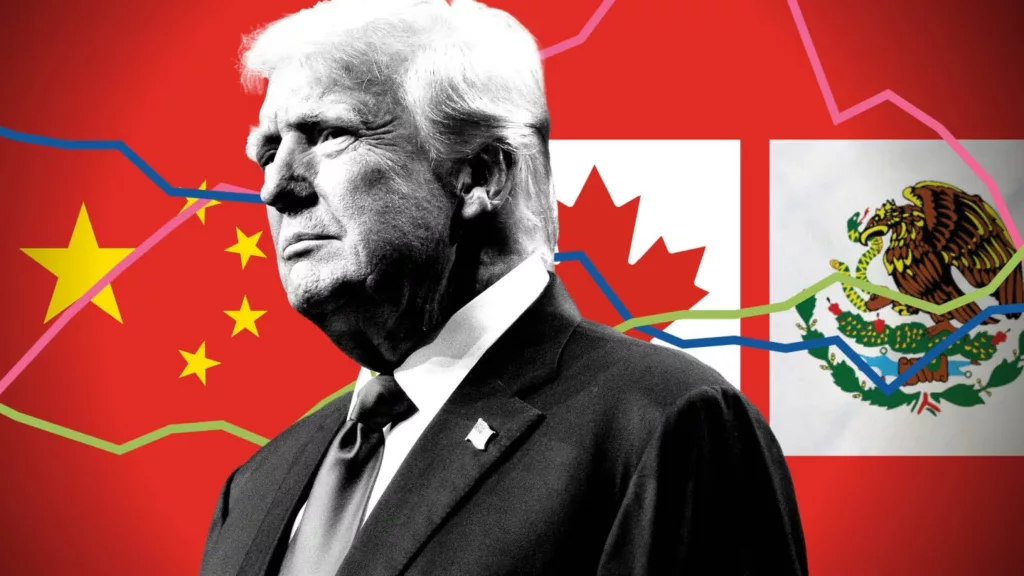
The cryptocurrency market has experienced a significant downturn today (3 February, 2025), with major assets like Bitcoin and Ethereum witnessing notable declines. This drop is closely linked to recent economic policies, particularly President Donald Trump’s decision to impose increased tariffs on imports from Canada, Mexico, and China. These tariffs have set off a chain reaction affecting inflation, the Federal Reserve’s interest rate decisions, and, consequently, the broader financial markets, including cryptocurrencies.
Market Overview: February 3, 2025
The cryptocurrency market has experienced a sharp downturn, with significant losses across major assets:
- Total Market Cap: The overall crypto market capitalization plummeted from $3.41 trillion on February 2 to $3 trillion on February 3, reflecting a 12.02% decline.

- Bitcoin (BTC): The leading cryptocurrency dropped below the $100,000 mark, hitting a three-week low of $91,441.89.
- Ethereum (ETH): The second-largest crypto by market cap fell to $2,494.33, its lowest level since early September.
- Altcoins: Many alternative cryptocurrencies faced even steeper losses, with Solana (SOL) down 8% and XRP plunging 20%.

- In the past 24 hours, 740,197 traders have been liquidated, with total liquidations reaching $2.25 billion—the highest level ever recorded in crypto, surpassing even the liquidation spikes seen during the COVID crash and the FTX collapse.

These declines are driven by broader market concerns, primarily stemming from geopolitical and economic developments, including recent tariff policies.
Understanding Tariffs and Their Economic Impact

A tariff is a tax imposed by a government on imported goods. The primary purposes of tariffs are to:
1. Protect Domestic Industries: By making imported goods more expensive, tariffs encourage consumers to buy domestically produced products.
2. Generate Revenue: Governments collect revenue from the taxes levied on imports.
However, while tariffs can benefit local industries, they often lead to higher prices for consumers. When companies face increased costs due to tariffs, they may pass these costs onto consumers in the form of higher prices. This general rise in prices across goods and services is known as inflation.
Why Increased Tariffs Lead to Inflation
When tariffs are imposed on imported goods, several effects can contribute to inflation:
- Higher Production Costs: Many domestic products rely on imported components. Tariffs increase the cost of these components, leading to higher production costs for domestic manufacturers.
- Increased Consumer Prices: As production costs rise, companies often pass these expenses onto consumers, resulting in higher retail prices.
- Supply Chain Disruptions: Tariffs can lead to retaliatory measures from other countries, causing disruptions in the supply chain and further increasing costs.
For instance, following the recent U.S. tariffs, Canada and Mexico announced plans for retaliatory tariffs on U.S. goods, which could affect various sectors and contribute to rising prices.
The Federal Reserve’s Role and Interest Rates
The Federal Reserve (Fed) is the central banking system of the United States. One of its primary responsibilities is to manage the country’s monetary policy, particularly by controlling interest rates, to maintain economic stability.
The interest rate set by the Fed influences the cost of borrowing money. Lower interest rates make borrowing cheaper, encouraging spending and investment, while higher rates make borrowing more expensive, which can slow down economic activity.
How Inflation Influences the Fed’s Decisions
The Fed closely monitors inflation to decide on interest rate adjustments:
- Rising Inflation: If inflation is increasing beyond the Fed’s target (commonly around 2%), the Fed may raise interest rates to cool down the economy.
- Stable or Falling Inflation: If inflation is stable or decreasing, the Fed might lower interest rates to stimulate economic activity.
With the recent tariffs expected to drive up consumer prices, the Fed faces a dilemma. Economists predict that the surge in inflation from these tariffs eliminates the possibility of the Federal Reserve resuming interest rate cuts in the near future, affecting economic policy and market stability.
Impact on Financial Markets and Cryptocurrencies
Financial markets are sensitive to changes in interest rates and inflation expectations. The anticipation of sustained or increased interest rates can lead to several reactions:
- Stock Market Declines: Higher interest rates can reduce corporate profits and consumer spending, leading to lower stock valuations.
- Cryptocurrency Volatility: Cryptocurrencies are often viewed as alternative investments. In times of economic uncertainty or unfavorable monetary policies, investors might sell off riskier assets, including cryptocurrencies, leading to price declines.
The recent downturn in the crypto market reflects these concerns. Investors are reacting to the potential for prolonged higher interest rates and the broader economic implications of the new tariffs.
Conclusion
The recent decline in cryptocurrency values is closely tied to President Trump’s imposition of new tariffs, which have the potential to increase inflation. This inflationary pressure may prompt the Federal Reserve to maintain or even raise interest rates, creating an environment that investors perceive as challenging for both traditional and digital assets.
While the immediate impact of trade tariffs has been negative for the cryptocurrency market, experts like Jeff Park, Head of Alpha Strategies at Bitwise, suggest that these same policies could make Bitcoin more attractive in the long run. As individuals and investors seek to protect their wealth from rising inflation, Bitcoin’s role as a store of value may lead to increased demand and potentially higher prices in the future.





